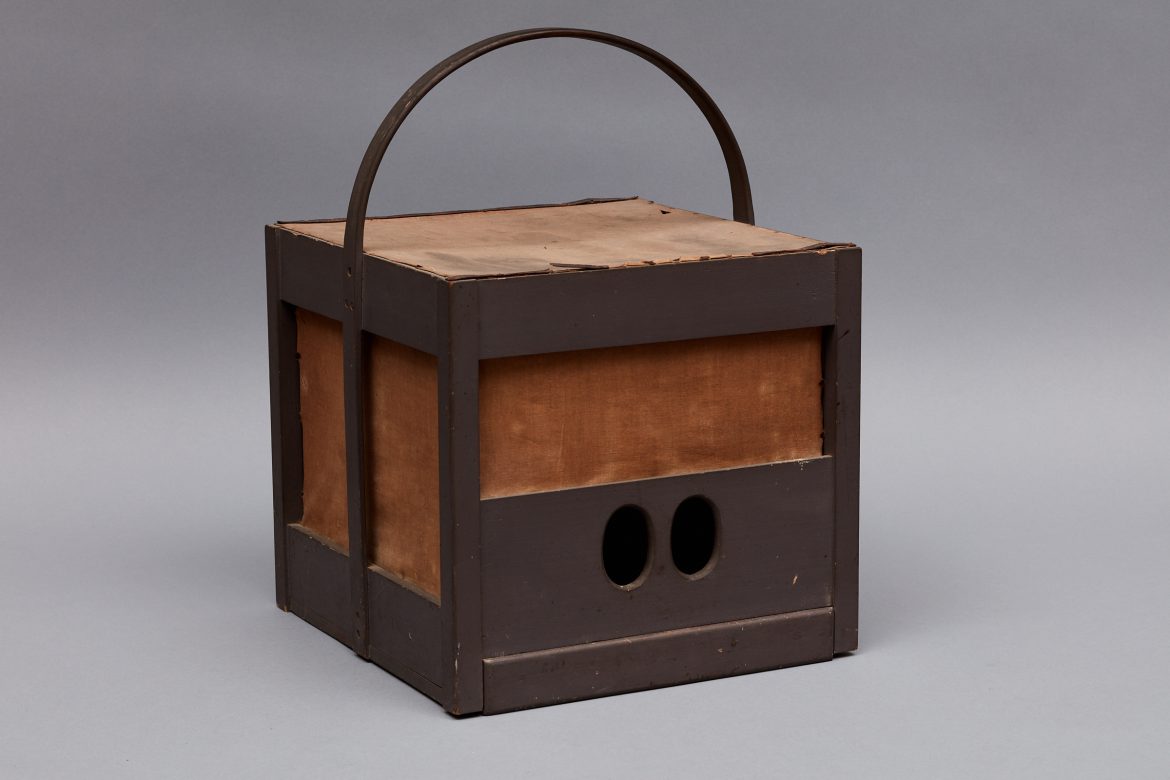
Swarm Box, North Family, Mount Lebanon, NY, ca. 1860, Shaker Museum | Mount Lebanon: 1950.2727.1a,b, John Mulligan, photographer.
The Shakers were at the forefront of beekeeping both in their New England communities and in the West. Early on they understood the importance of the role bees played in pollinating their crops and, of course, enjoyed the honey and made use of beeswax. Most of the documentation of beekeeping at Mount Lebanon involves Elder […]

Advertising Flyer, “Honey, Soul of Flowers to Sweeten the Soul of Man,” North Family, Mount Lebanon, NY, Shaker Museum | Mount Lebanon: 2003.20848.1.
The Shakers were at the forefront of beekeeping both in their New England communities and in the West. Early on they understood the importance of the role bees played in pollinating their crops and, of course, enjoyed the honey and made use of beeswax. Most of the documentation of beekeeping at Mount Lebanon involves Elder Giles B. Avery at the Church Family. Avery kept a number of hives at both Mount Lebanon and at Watervliet, NY. His “Journal Concerning Bees in the Second Order,” as well as his notations about bees in the Church Family daily journals and his personal diaries, provide a clear picture of him as a progressive beekeeper. He quickly adopted improvements in hive designs and was aggressive in his procurement and use of Italian queens as they became preferred for strong hives.

Postcard, “Among the Bees,” North Family, Mount Lebanon, NY, ca. 1905, Shaker Museum | Mount Lebanon, NY: 1950.4154.60, photographer unidentified.

Postcard, “Working in the Bee Garden”, North Family, Mount Lebanon, NY, ca. 1915, Shaker Museum | Mount Lebanon: 1950.4154.27, Will S. Potter, photographer.
Elder Giles mentions placing his hives at several of the Mount Lebanon families, but does not mention doing so at the North Family. This suggests that the North Family had its own beekeeper. By the turn of the twentieth century that beekeeper was Sister Mazella Gallup. Whether the North Family beekeeping was done by the sisters earlier is not known at present, but evidence of the sisters’ involvement in the task is documented in photographs of the “Bee Garden” from the early 1900s.

Swarm Box, North Family, Mount Lebanon, NY, ca. 1860, Shaker Museum | Mount Lebanon: 1950.2727.1a,b, John Mulligan, photographer.
The swarm box was used by beekeepers to transport wild swarms of bees to their manufactured hives. When a swarm was located – usually hanging on a branch of a tree or bush – the back of the box was opened to receive the swarm. To get the swarm in the box either the swarm was shaken until the queen fell into the box or the beekeeper would reach into the swarm, retrieve the queen, and put her in the box. Once the queen was in the box the rest of the swarm would follow. The swarm box, made of pine and basswood with an oak handle, is covered with a finely woven linen to provide ventilation during transport. Once back at the hives the bees were transferred into a prepared hive. The two holes in the box apparently let the bees come and go until they decide to move into the new hive.
This swarm box was purchased by Shaker Museum founder John S. Williams, Sr., from Sister Frances Hall, the trustee at Hancock, MA, around 1948, from the “surplus” North Family items that had come to Hancock the year before when the last Shaker left Mount Lebanon.